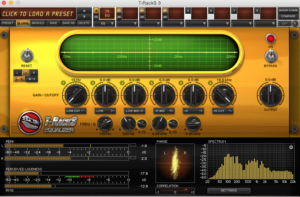The Benefits of “Two Tin Cans and a String” Mixing
Volumes have been written on how important good acoustics are to a mixing room, and there are plenty of how-to guides out there that can help you through the process of creating these atmospheres in your home studio. When I first started out, I treated these recommendations as if they were unbreakable laws. I became obsessed with fixing every imperfection in my space, and would evaluate the the sound quality of the places I went (offices, gyms, hotel lobbies, etc.). It got to the point where I actually listed “bad acoustics” as a legitimate reason to quit a restaurant job I was working at the time.
In time I discovered that the pursuit of the perfect listening room was becoming a major limitation for me. Not only did I not find the process all that interesting, but I was also becoming less trustworthy any speakers that were not my home monitors. Further, I could not get any mixing done while on the road, as it was simply not feasible to travel with bulky monitors, not to mention the hassle in trying to do any kind of treatment on a temporary space (such as a friend’s guest bedroom or hotel room). So, I decided to break the rule I had been taught since Day 1, that one mixes in the best environment and masters in the worst.
In the end, my mixes turned out great. In fact, what I found was that listening variety even during the mixing stage was far more important than having a perfect room. There were many times when I was confident in a mix produced on my treated environment, only to get frustrated that I had to make significant level adjustments to make it listenable on earbuds. I found myself repeatedly asking the question: what speakers would my audience likely be listening on? It probably would not be studio monitors.
Today, I mix in several different spaces and through multiple speaker setups. Sometimes, I am working on my living room couch (in the worst acoustical space you could imagine) going between a Bose Soundtouch 10 and my iMac’s internal speakers. At some point, I will cycle in some cheapo headphones and then take the mix for a ride in my Focus. With time, I have learned that my headphones often cause me to push bass levels too high, so I anticipate this and then double-check my guess with the Bose. I also know that vocal reverb sounds more pronounced on my Apple speakers, so I don’t freak out when it comes through more subtly through the headphones. I also take full advantage of visual markers, particularly Spectrum and Phase in T-Racks.

To be on the safe side, I always check in at some point in a good room with decent monitors, but often this is a formality that doesn’t lead to significant tweaking. Moreover, headphone calibration companies like Sonarworks are beginning to cause us to seriously question the need for a good listening environment at all. I have yet to try these plugins out, but they appear to have good reviews.
At the end of the day, I found that limiting myself to one set of speakers (even high quality one’s) ultimately shackled me during the mixing process. Moreover, I have also come to accept that very few people are going to consume my music through ideal listening environments — in fact, most of my friends place their speakers wherever they will look the best in a room, without any consideration of sound quality. It is also safe to say that most people are likely to do the bulk of their listening through generic car speakers or earbuds. Recognizing this reality and becoming familiar with how your mixes are affected by these different environments at all stages of the mixing and mastering process can help sharpen your ear, improve your instincts, and help you achieve the best possible product across various listening devices. Just make sure you use a good reference track!


Comments
The Benefits of “Two Tin Cans and a String” Mixing — No Comments